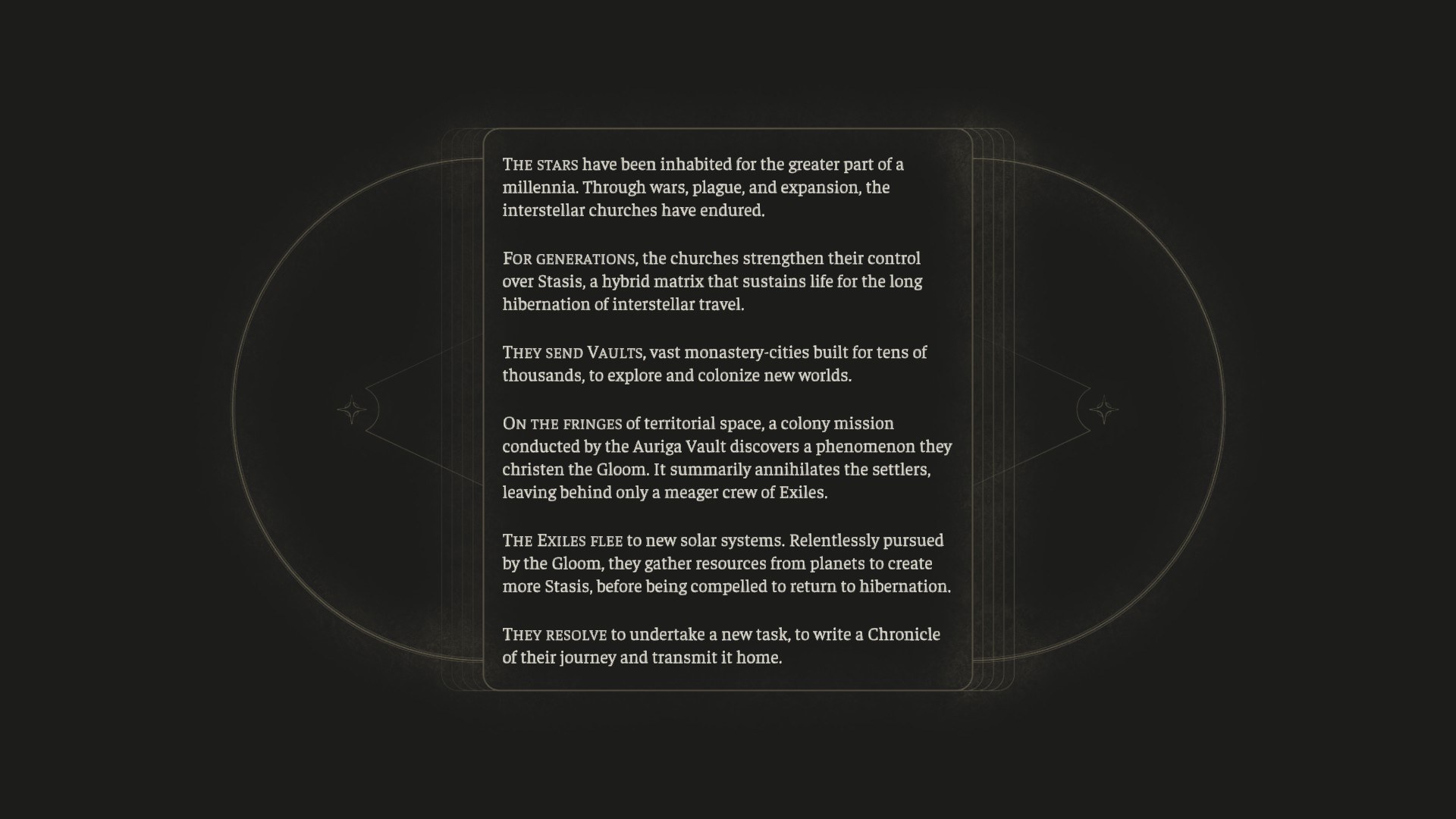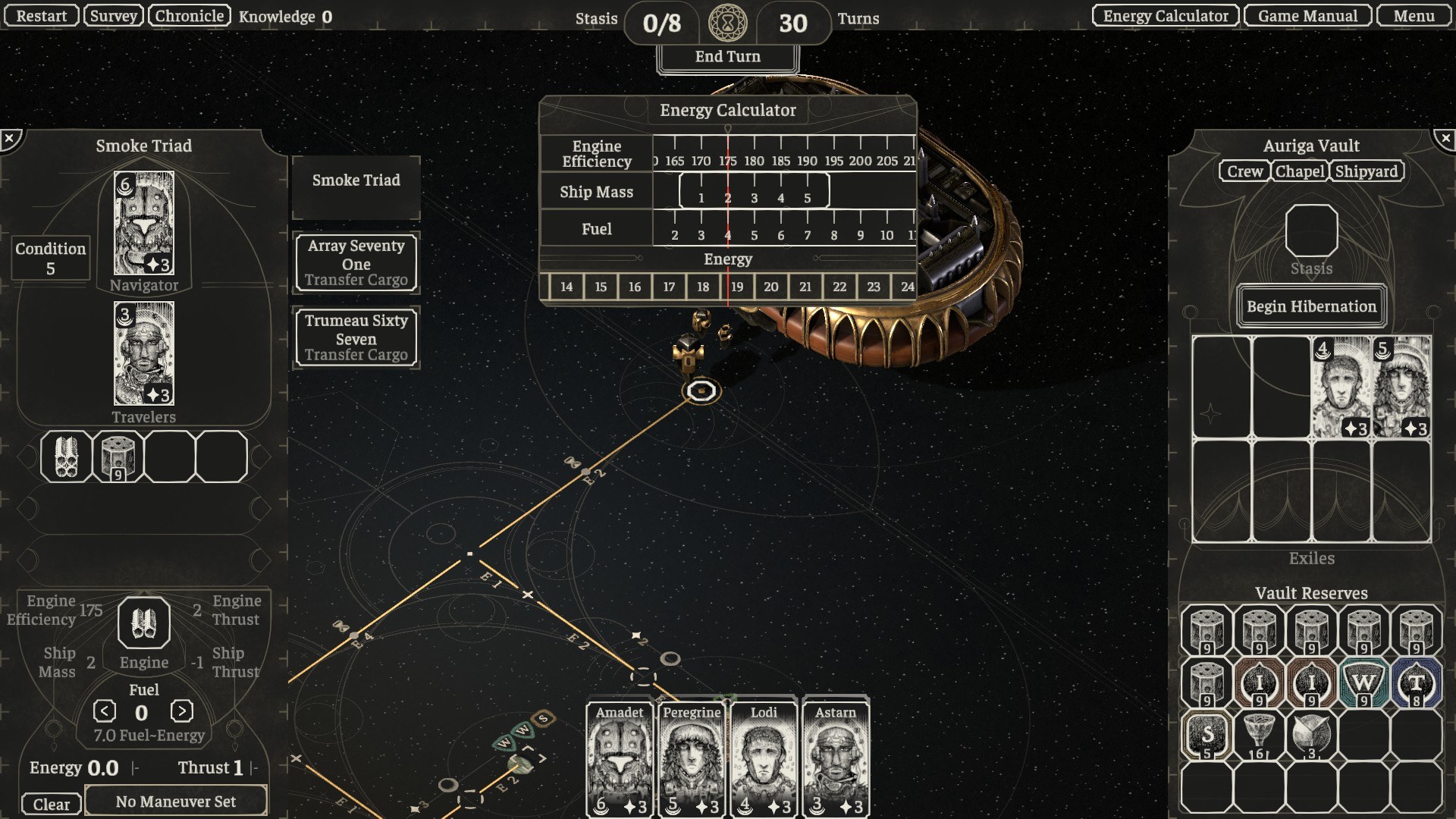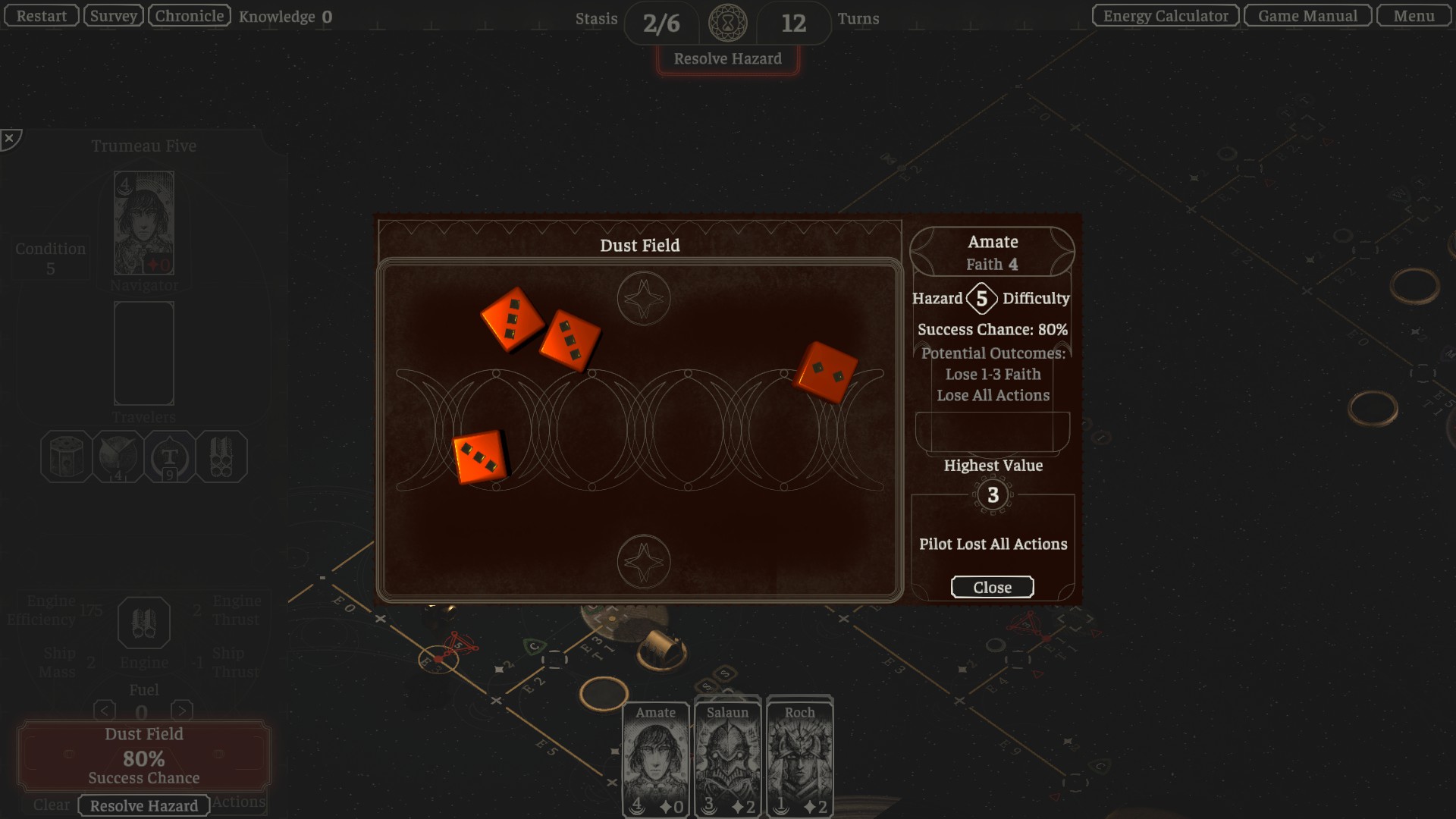Ever since the weirdness of Morrowind, Bethesda has crafted increasingly cozy worlds. Even the nuclear wastelands of Fallout 3 and 4 offered a wholesome slice of 1950s Americana when compared to Interplay and Black Isle’s nihilistic originals, and the same seems true of Starfield. We might not yet know exactly what the cyberpunk-themed Neon city will hold for us, nor which of the 1,000 Starfield planets will prove the parallel to Skyrim’s terrifyingly vast Blackreach, but the summer’s 45-minute showcase demonstrated a world that seems to be premised on starry-eyed optimism. Bethesda might be calling it “NASA-punk,” but, aside from ESRB warnings of substance abuse and swearing, I find it hard to see past the homely spaceship quarters and VASCO, the friendly robot companion.
In many ways that is just as well, and I am no less excited, but I do miss Bethesda’s darker, riskier world-building. Thankfully, I’ve found just the thing for that. If, during your dozens of hours exploring Starfield’s hopeful horizons, you ever feel the need to remind yourself that space is a dark, despairing, lonely place, look no further than The Banished Vault.
Ostensibly, The Banished Vault is a turn-based resource management sim. You arrive in a procedurally generated solar system in a mothership with some crew, resources, and a few smaller vessels. Your aim is to gather enough additional resources to put your crew into stasis and get to the next system within 30 turns (give or take). Guide your ships past dice-roll-based hazards, build a special structure in four different systems along the way, and you win. This unlocks a series of gameplay options you can tweak for the next journey.
Putting it that way, however, is rather like describing Gene Wolfe’s The Book of the New Sun – an explicit influence on The Banished Vault – as a story about a questionably dressed teenager who becomes the ruler of a far future nation after a bit of soul-searching. Like its literary inspiration, The Banished Vault is strange, haunting, beautiful, dense, challenging, and utterly singular. At its best, it offers some of the most absorbing and unusual mechanics this side of a grand strategy. At its worst, it can leave you paralyzed with indecision, unable to take a single turn, or restarting in despair. It is, in short, about as far away from Bethesda’s increasingly frictionless power fantasies as one can get.

The Banished Vault is presented like a lavish seventeenth-century astronomical chart, complete with three-dimensional wooden pieces for ships and structures and two-dimensional cloth-like textures for its planets upon a dark background etched with geometry and mathematical shorthand. The representations of solar systems are accompanied by arresting charcoal-like sketches of crew, resources, and items, adorned with cryptic descriptions that hint at an austere world of quasi-religious symbolism.
It is the perfect backdrop for the Auriga Vault, a vast gothic cathedral-like generation ship, fleeing an all-devouring phenomenon known only as the Gloom. There is no hope of homeland or settlement. Homeworld’s displaced Kushans have nothing on the Auriga Vault; Mass Effect’s nomadic Quarians have never had it so good by comparison. The Vault’s crew are sustained by a waning Faith and the determination to leave a Chronicle of their deeds – an attempt at immortalization in a universe that is gradually succumbing to an abyss that will soon erase any trace of their presence.
Putting the crew into stasis between solar systems and writing a Chronicle requires careful planning. In a previous life I taught formal logic, including derivation: start with some axioms, look at what you need to prove, and try to derive it from the axioms given the rules permitted by the logic. Planning your moves in The Banished Vault is remarkably similar. To efficiently tackle a given solar system – indeed, to be able to make any well-informed progress at all – you need to take stock of your goals for that system and your resources going into it. When each solar system presents an increasingly complicated daisy chain of relative constants and variables, overlayed with considerations like engine efficiency, ship and planetary mass, and permanent improvements that you can purchase between solar systems, it’s easy to see why some of my calculations have taken as long as an hour.
Sometimes a single oversight or a bad dice roll for the game’s few RNG challenges has led to disastrous consequences: a ship that cannot get back to the Vault, a shortage of just a couple of units of resources, a crew member without Faith. Enough to leave me wondering what to do or questioning whether the welcoming stars of Starfield’s galaxy might be preferable after all.
And yet there is something therapeutic about The Banished Vault’s uncompromising approach. Huddled late in the evening under a dim light, with the game’s echoing, vaguely choir-like synths droning out of my speakers, I scribble barely comprehensible notes on a growing stack of papers. Every now and then I refer back to my physical copy of the manual (available in-game at the press of a button), which includes helpful reference pages with resource and unit costs.
On one hand, it is a maximal gap between the player and the game – a requirement to put it down for long stretches of time to work out how to continue playing it. On the other, it is a kind of videogame equivalent of the extended mind hypothesis – the boundary between what’s on screen and what’s on the desk mediated by my jottings and the manual, the game’s esoteric geometry almost spilling out of the monitor onto the paper before me. Starfield can wait then; I have some Tsiolkovsky-based energy calculations to compare before I decide which ship to send into The Banished Vault’s cosmic void.
If you’ll be hopping on board come the Starfield release date, be sure to make use of our Starfield companions guide to see who to recruit, as well as our expert rundowns of the best Starfield traits and Starfield skills to pick, and our list of every available Starfield background to choose from. If you’re less inclined to talk your way through combat encounters, you’d also be wise to check out our Starfield guns guide.
If you’re looking for more, our new Starfield Database goes further, offering you daily news, searchable databanks, and even interactive tools.



